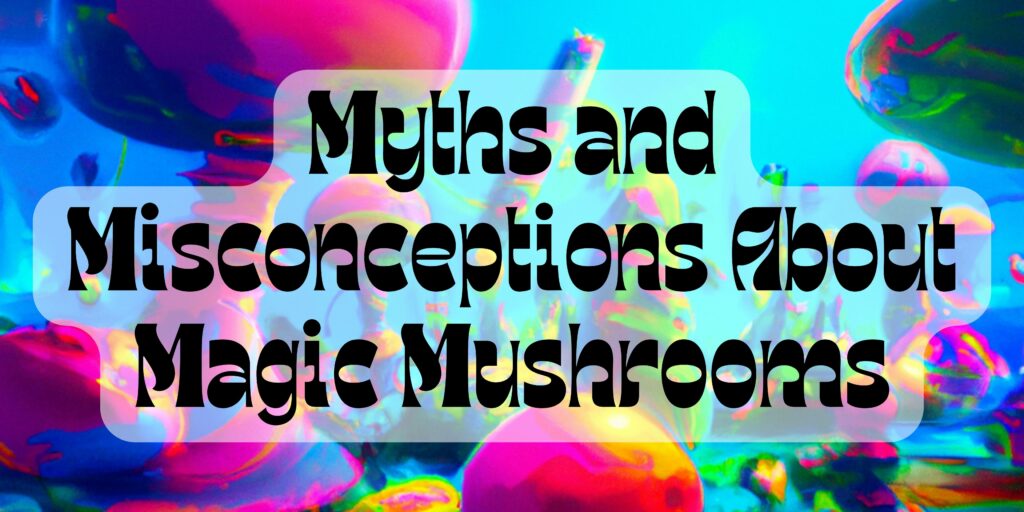Taking shrooms, also known as magic mushrooms, can lead to a variety of effects on the mind and body. A survey conducted by Johns Hopkins University found that while some individuals had negative experiences or “bad trips,” many still found the experience to be meaningful or worthwhile. It is important to understand the risks and potential benefits associated with taking shrooms, as well as the importance of a safe and supportive environment during the trip.
Key Takeaways:
- Shrooms can induce euphoria, hallucinations, altered perception of time and space, and profound spiritual experiences.
- Long-term shroom use can potentially impact mood, emotions, and cognitive functions.
- Safety tips for taking shrooms include starting with a low dose, having a trusted person present, and creating a conducive setting.
- Shrooms may have therapeutic benefits for conditions such as addiction, Alzheimer’s, PTSD, and depression.
- Research on shrooms and their effects is ongoing, with the need for further scientific studies.
Understanding the Short-Term Effects of Shrooms
When consumed, shrooms can induce a range of short-term effects. These effects can vary from person to person and are influenced by factors such as dosage and set and setting. Some of the common effects of taking shrooms include:
- Euphoria: Many users report feeling intense euphoria and a sense of well-being.
- Visual and Auditory Hallucinations: Shrooms can cause vivid visual and auditory hallucinations, where users may see and hear things that are not actually there.
- Altered Perception of Time and Space: Time may feel distorted, and users may have a sense of being outside of their normal reality.
- Spiritual or Mystical Experiences: Some individuals may have profound spiritual or mystical experiences while under the influence of shrooms.
- Intensified Emotional States: Shrooms can intensify emotions, leading to feelings of joy, happiness, and connection with the universe.
The intensity and nature of these effects can vary among individuals and even between different trips for the same person. It is important to approach the experience with caution and be prepared for the potential intensity of the effects.
Exploring the Long-Term Effects of Shrooms
While shrooms are generally considered to have a low potential for physical harm, there may be potential long-term psychological effects associated with their use. Regular consumption of psilocybin, the active compound in shrooms, can affect the serotonin system in the brain, potentially impacting mood, emotions, and cognitive functions. Some individuals may develop a condition known as Hallucinogen Persisting Perception Disorder (HPPD), which involves recurring visual disturbances. Long-term shroom use can also influence personality, behavior, and emotional well-being, with some individuals experiencing increased anxiety, depression, or symptoms resembling psychosis.
Research has shown that the effects of shrooms can be long-lasting, particularly in individuals who have a predisposition to mental health issues. It is important to note that the long-term effects can vary among individuals and may not affect everyone who consumes shrooms. However, it is crucial to approach shroom use with caution and consider the potential risks involved.
“Long-term shroom use can have profound effects on a person’s mental well-being. It is essential to understand the potential risks and to use these substances responsibly.”
The Risk of HPPD
Hallucinogen Persisting Perception Disorder (HPPD) is a condition characterized by the re-experiencing of visual disturbances that occurred during a shroom trip. These visual disturbances can persist long after the use of shrooms has ceased. While the exact cause of HPPD is unknown, it is believed to be related to the alteration of serotonin receptors in the brain. HPPD can be distressing and interfere with daily functioning, making it important to be aware of this potential risk before deciding to take shrooms.
The Impact on Mental Health
Shrooms can have a significant impact on mental health, particularly in individuals who are already predisposed to mental health conditions. Some individuals may experience increased anxiety, depression, or symptoms resembling psychosis after using shrooms. It is important to consider one’s mental health history and consult with a healthcare professional before using shrooms, especially if there is a history of mental illness.
Individual Variability
It is worth noting that the effects of shrooms can vary widely among individuals. Some individuals may have positive and transformative experiences, while others may have negative or distressing ones. Factors such as dosage, set and setting, and individual susceptibility can all play a role in the long-term effects of shrooms. It is important to approach shroom use with caution and be aware of one’s personal limits and vulnerabilities.
The Importance of Further Research
While there is ongoing research on the long-term effects of shrooms, there is still much to be learned. Further scientific studies are needed to better understand the potential risks and benefits associated with shroom use. This research can help inform individuals about the potential long-term effects and allow for safer and more informed decision-making.
Table: Long-Term Effects of Shrooms
| Effect | Description |
|---|---|
| Hallucinogen Persisting Perception Disorder (HPPD) | Recurring visual disturbances that persist long after shroom use. |
| Impact on mental health | Increased anxiety, depression, or symptoms resembling psychosis. |
| Individual variability | Effects can vary widely among individuals based on factors such as dosage, set and setting, and individual susceptibility. |

Safety Tips for Taking Shrooms
When it comes to taking shrooms, prioritizing safety is of utmost importance. Here are some tips to ensure a positive and safe experience:
- Start with a low dose: Begin with a small dosage and gradually increase if necessary. This allows you to gauge your tolerance and sensitivity to the effects of shrooms.
- Choose a safe environment: Create a comfortable and supportive setting for your psychedelic experience. Opt for a familiar space where you feel secure, surrounded by trusted individuals who can provide guidance and assistance if needed.
- Have a trip sitter: It is advisable to have a trusted person present who can act as a trip sitter. A trip sitter can offer reassurance, provide assistance, and help ensure your safety throughout the trip.
- Be mindful of set and setting: The mindset and intention behind taking shrooms, known as the “set,” can greatly influence your experience. Approach the trip with a positive mindset and clear intentions. Also, consider the physical and social environment, or the “setting,” and choose a space that promotes relaxation and comfort.
- Seek support if needed: If you have any pre-existing mental health conditions, it is essential to consult with a healthcare professional before taking shrooms. They can provide guidance tailored to your specific needs and help you navigate any potential risks or contraindications.
Remember, taking shrooms carries inherent risks, and it is essential to approach their use responsibly. By following these safety tips and being mindful of your physical and mental well-being, you can enhance the potential for a meaningful and positive experience.
The Therapeutic Potential of Shrooms
Shrooms, also known as magic mushrooms, have been found to have potential therapeutic benefits for various psychiatric and behavioral disorders. Research conducted by the Johns Hopkins Center for Psychedelic and Consciousness Research suggests that psilocybin, the active compound in shrooms, may hold promise in the treatment of conditions such as opioid addiction, Alzheimer’s disease, post-traumatic stress disorder (PTSD), and major depression.
A study conducted at Johns Hopkins found that psilocybin-assisted psychotherapy helped individuals with cancer-related anxiety and depression, with the effects lasting up to six months. Another study showed that psilocybin facilitated smoking cessation, with 80% of participants remaining smoke-free after six months. These findings indicate the potential of shrooms as a therapeutic tool in addressing challenging mental health conditions and behavioral patterns.
However, it is important to note that further research is still needed to fully understand the therapeutic potential of shrooms and to establish standardized protocols for their clinical use. Ongoing studies aim to explore the mechanisms of action, optimize treatment protocols, and assess long-term outcomes. The therapeutic application of shrooms is a promising area of research that may provide new avenues for treating mental health disorders.
Potential Therapeutic Benefits of Shrooms:
- Reduction in anxiety and depression in cancer patients
- Facilitation of smoking cessation
- Treatment of opioid addiction
- Potential benefits for Alzheimer’s disease
- Possible efficacy in addressing post-traumatic stress disorder (PTSD) and major depression
The therapeutic potential of shrooms offers hope for individuals struggling with mental health conditions. However, it is important to approach their use with caution and under the guidance of trained professionals. It is crucial to create a safe and supportive environment for shroom-assisted therapy to maximize the potential benefits and minimize potential risks.
The Importance of Set and Setting
Taking shrooms can be a transformative experience, but it is essential to understand that the mindset and environment in which you consume them can significantly impact your trip. This is where the concept of “set and setting” becomes crucial. The term “set” refers to your mental and emotional state, while “setting” encompasses your physical surroundings and the people you are with.
Creating a positive set involves cultivating a mindset of openness, curiosity, and respect for the psychedelic experience. This means approaching the trip with intention, understanding that it can be a powerful tool for self-discovery and personal growth. It is important to be prepared mentally, addressing any fears or concerns beforehand so that you can approach the experience with a calm and receptive mindset.
The setting plays an equally important role in shaping your shroom trip. Choose a comfortable, safe, and familiar environment where you feel secure and at ease. Surrounding yourself with trusted friends or experienced guides who can provide support and guidance can enhance the overall experience. Consider factors such as lighting, music, and ambiance to create a soothing and conducive atmosphere for your journey.
By paying attention to both set and setting, you can optimize your shroom experience and increase the likelihood of a positive outcome. Remember, everyone’s trip is unique, and what works for one person may not work for another. It is important to trust your instincts and find the set and setting that feels right for you.

The Need for Further Research
While research on shrooms and their effects has been growing, there is still much to learn. The Johns Hopkins Center for Psychedelic and Consciousness Research is leading the way in exploring innovative treatments using psilocybin. With ongoing studies and investigations, researchers aim to develop new treatments for a wider range of psychiatric and behavioral disorders, as well as explore the potential benefits for healthy individuals.
The current body of research on shrooms has provided valuable insights into their short-term and potential long-term effects. However, there are still many unanswered questions. Further scientifically rigorous studies are needed to better understand the risks, benefits, and potential of using hallucinogenic drugs like shrooms.
One area that requires further investigation is the long-term psychological effects of shrooms. While shrooms are generally considered safe physically, their impact on mood, emotions, and cognitive functions needs to be thoroughly examined. This will help determine the potential risks and benefits of using shrooms in therapeutic settings and for personal growth.
The Importance of Clinical Trials
In order to expand our understanding of shrooms, it is crucial to conduct more clinical trials. These trials involve controlled experiments with human participants and are essential for establishing the safety and efficacy of shroom use in medical and therapeutic contexts. By following strict scientific protocols, researchers can gather reliable data and draw meaningful conclusions.
Additionally, more research is needed to explore the potential of shrooms in treating specific conditions. While there have been promising findings in the areas of addiction, depression, and PTSD, further studies are necessary to confirm these initial results and determine the optimal dosages, treatment protocols, and potential risks involved.
Conclusion
In conclusion, taking shrooms can result in a range of effects on the mind and body. From the short-term euphoria and hallucinations to the potential long-term psychological impacts, it is crucial to approach shroom use with caution and prioritize safety.
Creating a supportive environment and seeking professional guidance, especially for individuals with pre-existing mental health conditions, is essential. While some individuals may find the experience to be meaningful or therapeutic, further research is needed to fully understand the risks and potential benefits of using shrooms.
As with any substance, making informed decisions and prioritizing personal well-being is of utmost importance. Whether you choose to explore the therapeutic potential of shrooms or not, it is always advisable to approach these substances with respect and care.
FAQ
What are the short-term effects of taking shrooms?
The short-term effects of taking shrooms can include euphoria, visual and auditory hallucinations, altered perception of time and space, and profound spiritual or mystical experiences. Emotional states may also be intensified, with users reporting feelings of joy, happiness, and connection with the universe.
Are there any long-term effects of taking shrooms?
Regular consumption of shrooms can affect the serotonin system in the brain, potentially impacting mood, emotions, and cognitive functions. Some individuals may develop a condition known as Hallucinogen Persisting Perception Disorder (HPPD), which involves recurring visual disturbances. Long-term shroom use can also influence personality, behavior, and emotional well-being, with some individuals experiencing increased anxiety, depression, or symptoms resembling psychosis.
What safety tips should I keep in mind when taking shrooms?
It is important to start with a low dose and gradually increase if necessary, always in a safe and comfortable environment with a trusted person present. Create a conducive setting for your psychedelic experience, such as a familiar and secure space. Additionally, be aware of the potential for addiction or dependence on the psychedelic experience and seek support if necessary.
What are the therapeutic potential of shrooms?
Research suggests that shrooms may have therapeutic benefits for various psychiatric and behavioral disorders. Studies have shown potential efficacy in treating conditions such as opioid addiction, Alzheimer’s disease, post-traumatic stress disorder (PTSD), and major depression. Psilocybin, the active compound in shrooms, has been found to help reduce anxiety in some cancer patients and facilitate smoking cessation. However, further research is still needed to fully understand the therapeutic potential of shrooms.
How important is the set and setting when taking shrooms?
The set and setting of a shroom trip can greatly influence the overall experience. The “set” refers to the mindset and intention of the individual taking shrooms, while the “setting” refers to the physical and social environment. Approaching the experience with a positive mindset and clear intentions, and choosing a comfortable and safe environment surrounded by supportive friends or experienced guides, can contribute to a more positive and beneficial experience.
Why is further research needed on shrooms?
While research on shrooms has been growing, there is still much to learn. Ongoing studies and investigations aim to develop new treatments for a wider range of psychiatric and behavioral disorders, as well as explore the potential benefits for healthy individuals. Further scientifically rigorous studies are needed to better understand the risks, benefits, and potential of using hallucinogenic drugs like shrooms.




